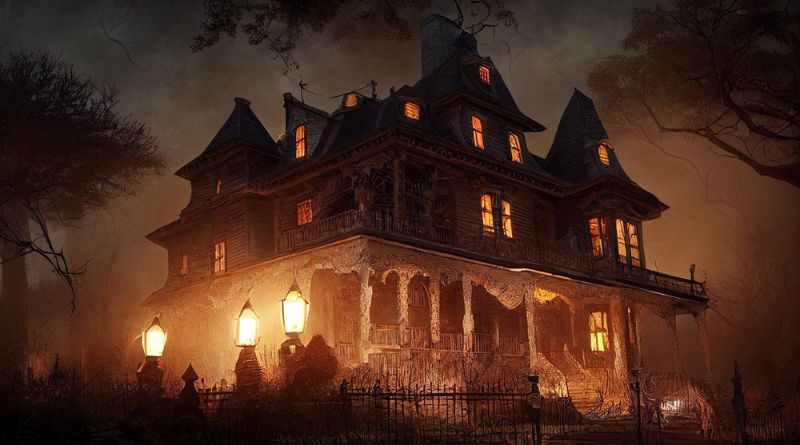The Judgment House attraction is a unique and immersive experience, offering visitors a theatrical portrayal of spiritual themes such as the afterlife, salvation, and the consequences of one’s actions. Often associated with Christian themes, this attraction is widely known for its impact on audiences, leaving them to contemplate the deeper meanings of life, morality, and faith. For those unfamiliar with the concept, Judgment Houses are an interactive, walk-through experience that typically portrays a “what if” scenario involving a person’s life, death, and final judgment.
Table of Contents
In this article, we will explore what a Judgment House is, its history, how it operates, and the impact it has on its visitors. Additionally, we will answer some common questions to help you better understand this attraction.
What is a Judgment House?
A Judgment House is a type of interactive Christian-themed attraction that takes visitors through a series of rooms or scenes depicting a life-or-death situation. The scenarios often center around a young person or family who faces a tragic event, such as a car accident, and then experiences what happens afterward in terms of judgment and eternal consequences. The goal is to communicate spiritual lessons, with a strong emphasis on salvation, the reality of hell, and the importance of making moral and religious choices in life.
Typically, these events are designed as part of a larger outreach program, often staged in churches or religious communities during the Halloween season or other periods when people are more receptive to spiritual discussions. The attraction is meant to be a compelling tool for evangelism, reaching both believers and non-believers by immersing them in an emotionally charged environment that encourages reflection on their own life choices.
The History of Judgment Houses
The concept of a Judgment House originated in the United States in the 1970s. The idea was created by a church group looking for an effective way to reach people with a message of salvation in a tangible and interactive manner. The first Judgment House was conceived by a church in Arkansas, with its purpose being to give visitors a deeper understanding of life’s consequences based on the moral decisions they make.
The format quickly spread to other areas, especially to evangelical Christian churches looking for innovative ways to engage their communities. Over the years, the Judgment House has grown in scale and sophistication, with many churches incorporating elaborate sets, actors, and special effects to enhance the experience. Some of the more well-known productions have included dramatic lighting, sound effects, and even live actors playing out scenes of tragic death, judgment, and eternal fate.
Since its inception, Judgment Houses have become particularly popular during Halloween, capitalizing on the season’s association with themes of death and the supernatural. However, they can also be staged at other times of the year as a way to address serious spiritual issues in a memorable and impactful way.
How Does a Judgment House Attraction Work?
A Judgment House attraction typically involves a series of rooms or staged scenes, each designed to tell a specific part of a person’s journey from life to death. The experience is designed to unfold in real-time, and participants often move through the scenes as actors perform their parts, allowing visitors to interact with the unfolding narrative.
1. Opening Scene – The Tragic Event
The first scene in a Judgment House usually portrays an event that leads to the person’s death, such as a car crash, a violent crime, or a sudden illness. This event is designed to be emotionally charged and engaging, setting the tone for what’s to come.
In this part of the experience, visitors may witness the character’s final moments, experiencing their fear, confusion, and the consequences of their actions. These scenes are intended to evoke strong emotional reactions and make visitors reflect on the fragility of life.
2. The Afterlife – Judgment and Consequences
After the death of the character, the group proceeds to the next part of the attraction: the afterlife. This stage is often the most dramatic part of the entire experience. Visitors will witness the individual being judged, either by an actor playing God or another religious figure, based on their life choices and relationship with faith.
The judgment scenes in a Judgment House typically focus on the Christian belief in eternal destinations: heaven and hell. The character may experience the consequences of their decisions, whether that’s being rewarded for a righteous life with eternal life in heaven, or facing eternal damnation in hell due to a life of sin and rejection of salvation.
This part of the attraction is meant to be thought-provoking and eye-opening. For many visitors, it’s an opportunity to reflect on their own lives, decisions, and spiritual beliefs.
3. Salvation and Redemption
At the conclusion of the attraction, the story often ends with a redemption arc, in which a character has the opportunity to embrace salvation through a relationship with Christ. In some Judgment Houses, the visitor’s journey may include a call to make personal decisions about salvation or spirituality, with invitations to accept Christ or become involved in the church.
The goal of the closing scenes is to reinforce the Christian message of redemption and hope, offering visitors the opportunity to reflect on the possibility of a better future and spiritual salvation.
The Purpose of a Judgment House
The primary purpose of a Judgment House is to engage visitors with spiritual themes in an emotionally and intellectually compelling way. These attractions are designed to evoke deep emotional responses, often making visitors confront their own beliefs, values, and fears about death, the afterlife, and the consequences of their actions.
For churches and religious organizations, Judgment Houses are seen as a form of evangelism—a tool for reaching those who may not otherwise attend a traditional church service or be open to spiritual messages. These interactive, immersive experiences aim to make the concept of salvation more tangible and relatable, allowing individuals to experience the dramatic consequences of their life choices in a way that is both engaging and impactful.
1. Evangelism and Outreach
By providing a memorable and emotionally charged experience, the Judgment House seeks to reach both church members and the wider community. Many people who might not typically attend a Sunday service may be drawn to a Judgment House due to its theatrical and experiential nature.
2. Theatrical and Educational
Through compelling storytelling and dramatic performances, Judgment Houses offer an educational experience by introducing complex spiritual and moral concepts in a format that’s easier to grasp. The engaging narrative structure of these attractions also allows for an exploration of important themes such as personal responsibility, sin, repentance, and forgiveness.
3. Catharsis and Reflection
For many visitors, the emotional and thought-provoking nature of the experience leads to catharsis—helping them to reflect on their own lives and decisions. In some cases, the attraction may prompt individuals to make life changes, whether by strengthening their faith, seeking redemption, or reconsidering their behavior and attitudes.
Common FAQs About Judgment Houses
1. Who can attend a Judgment House?
Judgment Houses are generally open to anyone, though some attractions may have age restrictions or parental guidance warnings due to the intense and dramatic nature of the content. Most Judgment Houses are geared toward a general audience, including children, teens, and adults, but the material can be emotionally intense, particularly for younger visitors.
2. Is there an entry fee for a Judgment House?
While many Judgment Houses are free, some may charge a small admission fee to cover costs associated with production, costumes, and sets. These fees vary depending on the location and scale of the event. Some churches or religious groups may also accept donations to help support the cost of staging the attraction.
3. Are Judgment Houses only for religious people?
Judgment Houses are open to individuals of all belief systems. While the content is Christian-focused, anyone with an interest in spiritual themes, morality, or theatrical experiences is welcome to attend. It’s also common for Judgment Houses to attract non-believers or individuals curious about faith.
4. When are Judgment Houses held?
Judgment Houses are often held around Halloween, but they can take place at other times of the year as well. Churches or organizations may stage these events during specific seasons, such as Easter, or during special outreach programs designed to engage the community.
5. What should I expect when attending a Judgment House?
Expect to walk through a series of rooms or staged scenes with live actors. These scenes may be emotional and intense, as they focus on life-and-death scenarios and the afterlife. You may also be given the opportunity to reflect on your own spiritual beliefs at the end of the experience, with a call for personal reflection or salvation.
Conclusion
The Judgment House attraction provides a unique opportunity for individuals to experience an emotionally charged, spiritual journey that reflects on the moral consequences of one’s choices in life. It is an engaging form of evangelism that blends immersive theater with Christian teachings, often provoking self-reflection, emotional responses, and spiritual introspection. Whether you attend out of curiosity or as part of a religious exploration, the Judgment House can be a powerful, thought-provoking experience.



